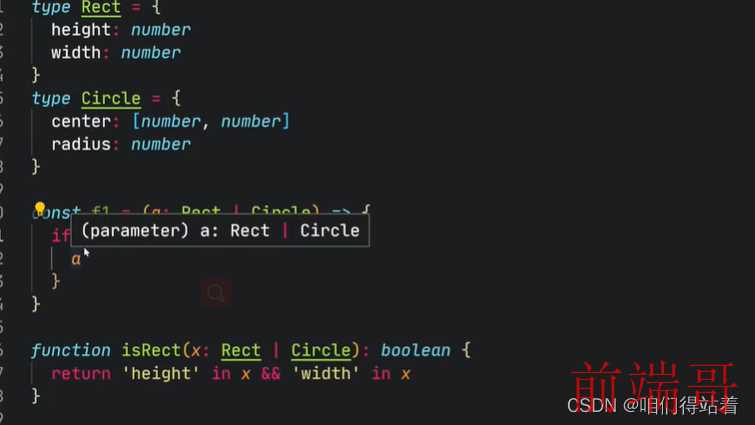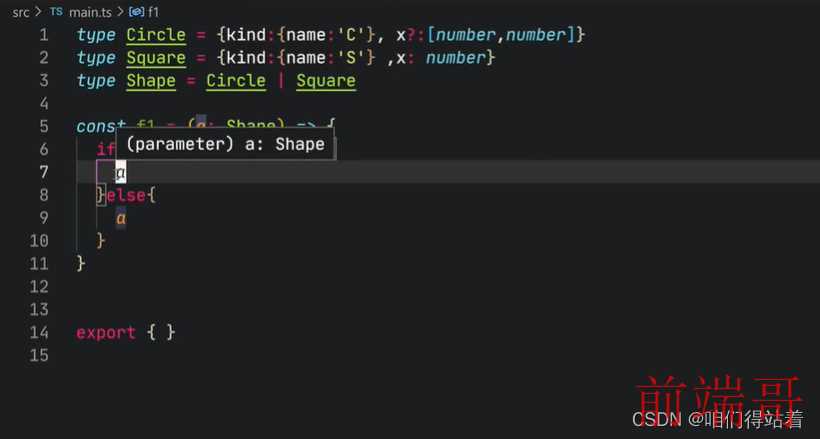Ts 类型收窄
关于类型收窄(Narrowing),市面上已经有很多文章去描述了,本博客在此来讨论各种类型收窄方法的应用场景。
背景
| 默认读者了解什么是ts, |
| 默认读者了解类型系统 |
| 默认读者使用规范的ts风格编程 |
应用场景
| 类型收窄是将类型从不太精确的类型推导为更精确的类型的过程。 |
| function fn (a: number | string | xxx){ |
| |
| } |
一 、 typeof 收窄
| 适用于: |
| string number bigint boolean symbol undefined object function |
| 无法判断的类型: |
| null 数组对象 自定义类型对象 日期对象 |
| 原因: |
| 以上无法判断类型的对象在typeof 均返回 ‘object’ |
二、 instanceof 收窄
| 适用于: |
| 日期对象、数组对象、正则对象 |
| 无法判断: |
| 简单数据类型:如:string number boolean等、ts自定义类型 |
| 原因: |
| instanceof 用于检测构造函数的 prototype 属性是否出现在某个实例对象的原型链上。而以上简单数据类型在js中并不是一个对象。 |
三、使用 in 运算符进行收窄
| |
| type Circle = { |
| radius: number |
| } |
| |
| type square= { |
| width: number |
| height: number |
| } |
| |
| function A(shape: Circle | square) { |
| if ('radius' in shape) { |
| |
| } |
| if ('width' in shape && 'height' in shape) { |
| |
| } |
| type A = { |
| name:string |
| } |
| type B = { |
| name:string |
| [k:string} : string |
| } |
| type A = ()=> void |
| type B = (xxx:number)=> string |
| |
| type A = { |
| (name:string):void |
| kand:'FnA' |
| } |
四、 类型为此 is 做类型收窄
| type Rect = { |
| height: number |
| width: number |
| } |
| type Circle = { |
| center: [number, number] |
| radius: number |
| } |
| |
| const F1 = (a: Rect | Circle)=>{ |
| if(isRect(a){ |
| |
| a.height = 1231231 |
| } |
| } |
| |
| |
| function isRect(x:Rect | Circle): x is Rect { |
| retrun 'height' in x && 'width' in x |
| } |

五 可辨别联合
| interface Circle { |
| kind: "circle"; |
| radius: number; |
| } |
| |
| interface Square { |
| kind: "square"; |
| sideLength: number; |
| } |
| |
| type Shape = Circle | Square; |
| |
| function f1(shape: Shape) { |
| if(a.kind === 'circle'){ |
| |
| console.log(a.radius) |
| } |
| } |
注意: 联合对象用于区分类型的字段不能是对象。
| interface Circle { |
| kind: {name:'Circle'} |
| radius: number; |
| } |
| |

此篇博客所有知识点来源于:
方应杭讲编程。



